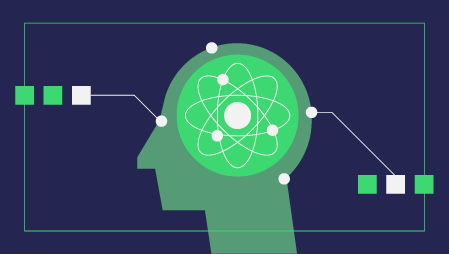Ready to learn Machine Learning? Browse courses like Robotics Application Machine Learning developed by industry thought leaders and Experfy in Harvard Innovation Lab.

Faced with the challenges of becoming digital organizations that truly meet customer and citizen demands, as my colleague Craig Wallace recently blogged, many organizations are looking at combining new and emerging technologies to support their holistic transformation.
According to the CGI Client Global Insights (2017), growing use of digital technologies (e.g., robotics, advanced analytics, cloud etc.) is a top trend among business and IT leaders. As part of intelligent automation investigations, robotic process automation (RPA) is being explored in many sectors across the globe, to increase the efficiency of operations and create new products and services.
Over the last few years, I’ve spent a lot of time proposing and delivering Proofs of Value (PoVs) / Proofs of Concept (PoCs) and enterprise RPA projects to IT and business leaders. Based on these experiences, I wanted to share some lessons learned for any leadership team looking to embark on their intelligent automation journey. Here are seven tips to consider:
1. Aim small, miss small: Personally, I don’t like to present RPA as the final solution to any problem that a client may be facing. In its current form, RPA is just the beginning of the automation journey that can lead to much more cognitive-based solutions. Having said that, since organizations need to get used to a new and very different way of thinking when it comes to automation, they should start small, aim for low-hanging fruit, and build from there. This is applicable to everything from proposing RPA POCs to selecting business processes for a first-time implementation.
2. Selection, selection, selection: Building successful RPA projects are all about selecting the correct business processes. Be it a POC or an RPA factory solution going at full speed, the automation delivery is only as strong as the selection of the business processes to automate. Get this step wrong, and everything downstream will go wrong, leaving you trying to play catch-up. Based on some very good work done by our teams, we have built a customizable process selection and analysis tool that allow us to filter out poor candidate processes relatively quickly.
3. Keep it simple: This age old principle is still valid for RPA projects. From process selection to the infrastructure setup, don’t try to 'boil the ocean'. Instead, an agile approach with a continuous delivery model works best to build organizational confidence as well as to iron out any kinks in the delivery model.
4. Never underestimate: The buzz around RPA has been about its ease of development and implementation. While this is true, too many times organizations, as well as implementation partners, make the mistake of underestimating the amount of work/experience required to deliver a quality product. Yes, it is easier and quicker to deliver, but you still need people with experience to have a successful implementation.
5. Put the right infrastructure in place: Having been through the struggles of creating an ad hoc solution to deliver a quick-and-dirty hosting solution, I have learned the hard way that it's extremely important to have the proper infrastructure solution in place from day one. Virtual workers are useless if they can’t connect to the engine!
6. Measure and track: To be able to deliver and continue to improve the efficiency of the virtual workers, it is important to have baseline metrics and then provide ongoing tracking of the efficiencies on a daily/weekly/monthly basis. The reporting functionalities of enterprise tools are limited, but that is mostly by design. Any reporting required should, and can, be created from within the automation itself to ensure bespoke designs that are specific to an organization’s needs and KPI’s.
7. This is just the beginning: As mentioned at the outset, RPA in its current form is not an end-all of intelligent automation. It is a stepping stone to greater opportunities in the journey towards full-blown artificial intelligence (AI). Any automation delivered should be modular enough to fit into more cognitive and AI-based solutions, such as conversational agents and chatbot’s, intelligent document processing, natural language platforms, voice recognition and synthesis, computer vision/image processing, machine learning (including deep neural nets), and more.
Are you exploring automation and AI for your organization? Please feel free to get in touch with me.



